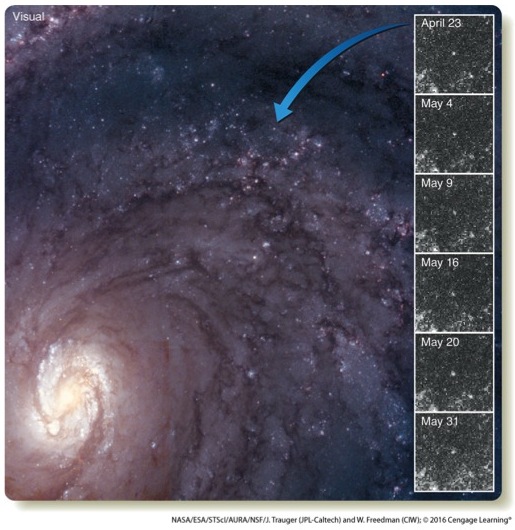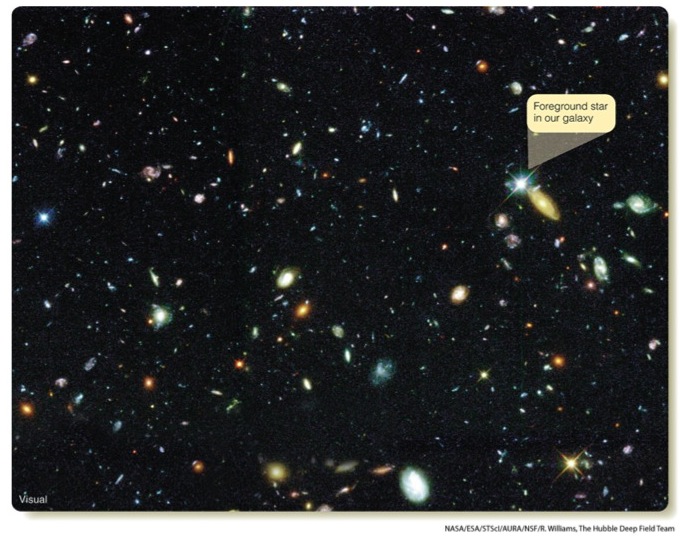In 1845, William Parsons observed many 'nebulae' with his telescope.
[The 1.8-m 'Leviathan', built in 1845, was restored to its original state in 1996-1998. Parsons, Lord of Rosse in Ireland, made this sketch of M51 using this telescope.]
[A modern view of M51 (NGC 5194) and NGC 5195. M51 is about 8.5 Mpc away, 20 kpc in diameter.]
Many 'nebulae' were known, including 'spiral nebulae', for example in Messier's catalogue (1774). But many astronomers in the 19th century did not agree with the concept of 'island universes'.
For the first time, the human beings know structures beyond our own galaxy!

[M31, with M110 to the lower left of the center. The angular distance between centers of M31 and M110 is about a Moon size.]
Hubble used Cepheids as distance indicators.

[One example of Cepheids in a galaxy. This is M100, estimated to be about 16 Mpc away.]

[The Hubble Deep Field image, about 1 arcmin across.]